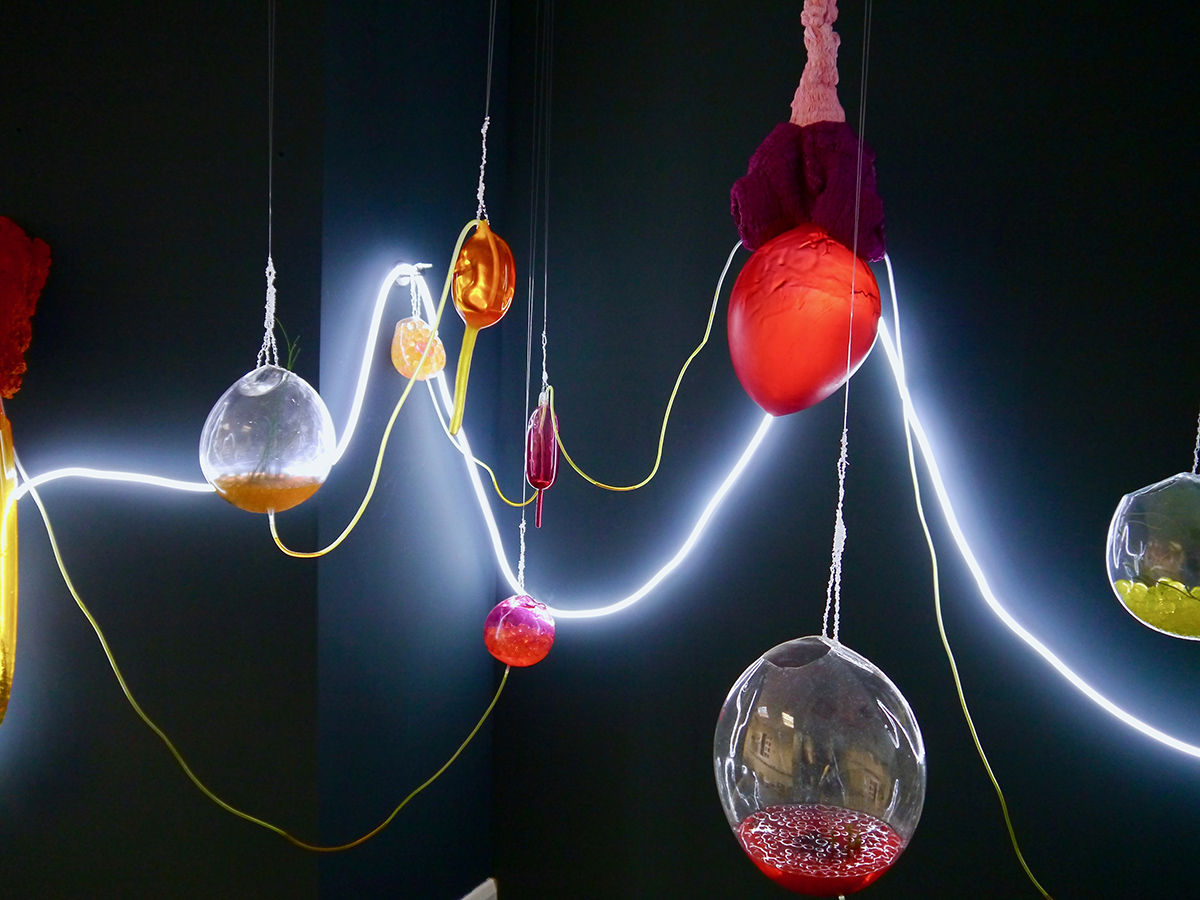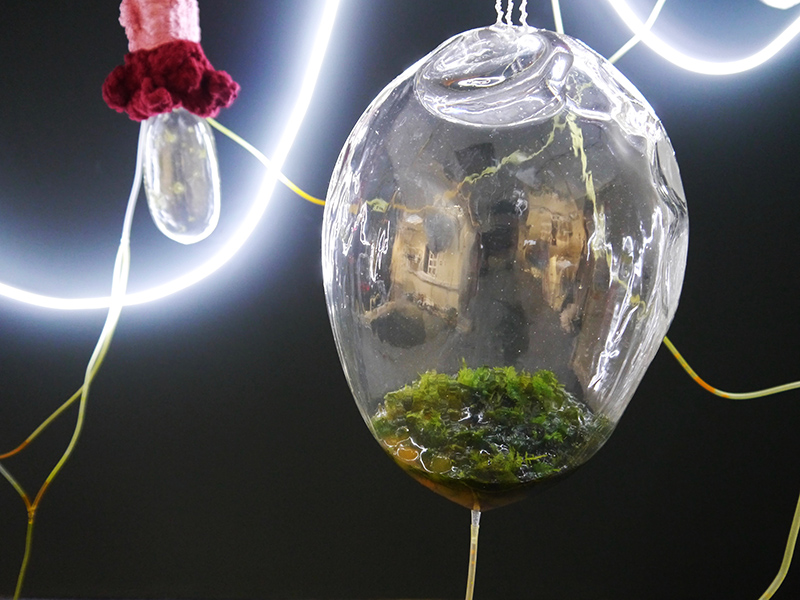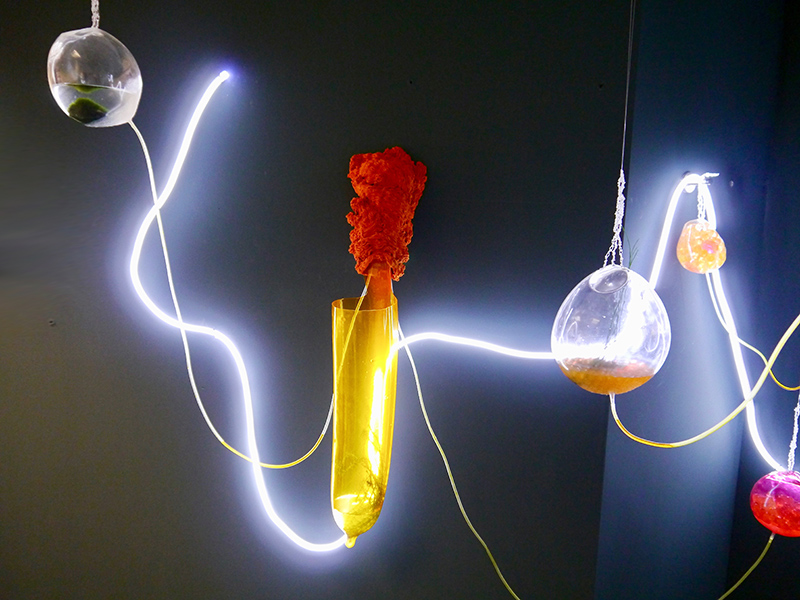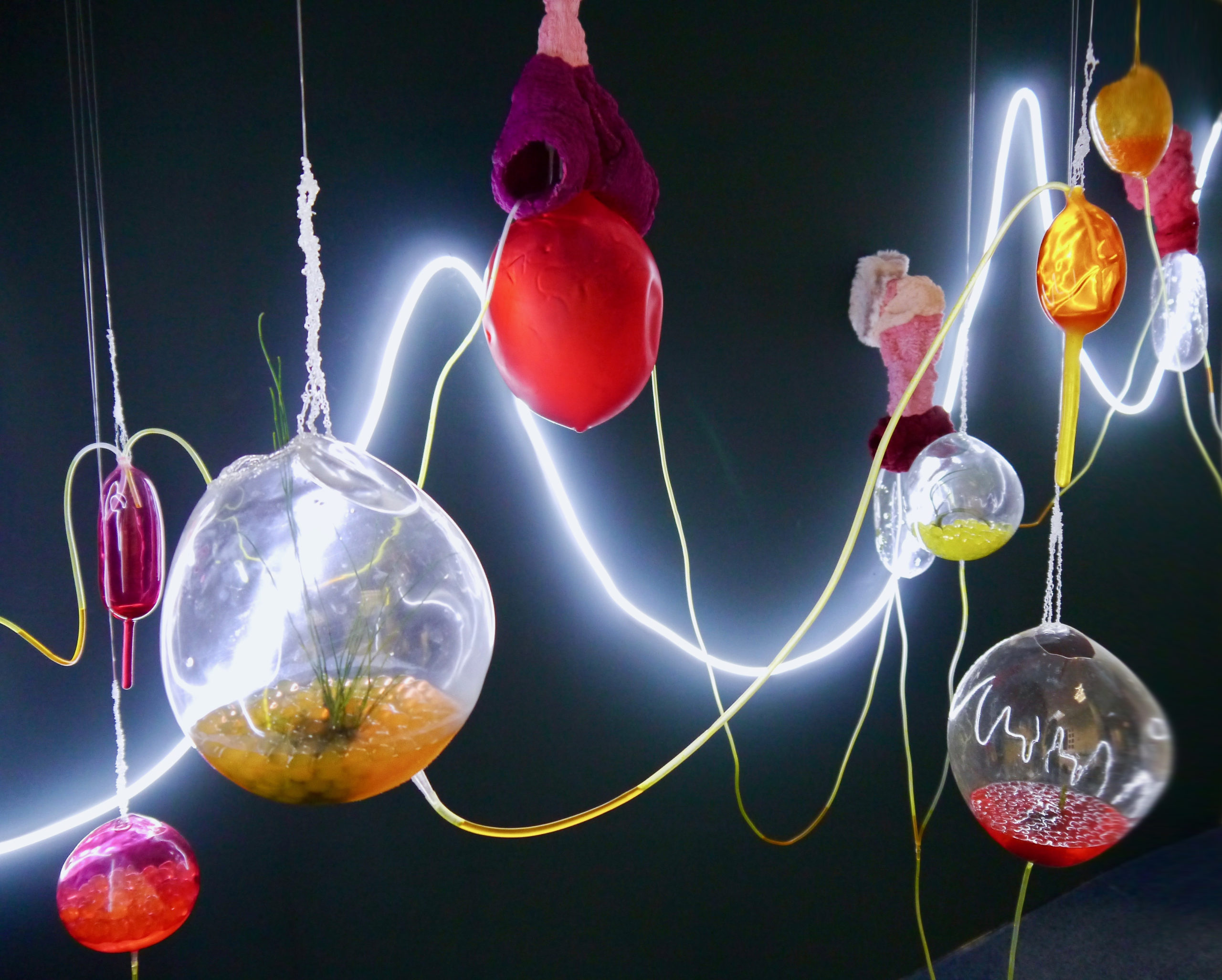Interest in queer theory for contemporary artist Matt Gale has less to do with gender and sexuality but more about a broader sense of otherness.
My approach to making art frequently borrows from scientific methodologies and an interest in the origins of materials founded on the notion that even manufactured materials are fundamentally organic. I have been using a lot more living material in my work this year, including organisms associated with bioremediation such as fungi and mealworm beetle larvae.

How did your tryst with art begin?
I have always enjoyed making things. Birthday and Christmas gifts as a child were generally Plasticine clay models and animal books. I had little interest in cars, trains or football, which inevitably got covered in clay and changed into something else if someone did buy them for me. I continued making sculptural work into adulthood, although it took me a long time to recognise myself as an artist.
Tell us about the evolution of your practice over the years.
Early work was often very figurative, generally depicting animals. I studied biology as an undergraduate and continue to be fascinated by the natural world, although my response tends to be more abstract now. Completing a Master’s Degree in Fine Art has really helped me contextualise my work and understand better how to develop a narrative that makes sense to me.
Artist residencies continue to be really helpful in providing something new or different to respond to or learn. I have also spent the past few years teaching undergraduate and postgraduate art students, which has contributed considerably to developing my own practice alongside those I mentor.

What were your biggest lessons and hurdles along the way? Which is your most memorable moment?
One of the first residencies I was selected for intimidated me sufficiently that I almost gave up. There were four other artists, all very accomplished, and the first day of the residency involved us presenting a talk about our practice. Unlike the other artists, I hadn’t studied art and didn’t really have any context for my work. I remember going home that evening feeling really ignorant, not really wanting to return the following day. It knocked my confidence badly, but I completed the residency, learnt a great deal, particularly concerning the importance of persevering even when you have moments when you lack faith in yourself. As an aside, I applied for and started a fine art master’s course later that year.
What inspires you? Take us through your process and continuous frameworks of reference.
I am very interested in scientific research. Am particularly fascinated by how that is translated to culture, how people perceive science and the natural world. I guess, as an artist, you tend to notice patterns, contradictions, and cultural impact and understanding in whatever subject already interests you. My approach to making frequently borrows from scientific methodologies and an interest in the origins of materials founded on the notion that even manufactured materials are fundamentally organic. Have been using a lot more living material in my work this year, including organisms associated with bioremediation such as fungi and mealworm beetle larvae. It’s a considerable challenge figuring out how best to exhibit something that is essentially living, whilst ensuring that you are being ethical and considerate of the organism’s needs.

What is the primary role of an artist? How do you describe yourself in the context of challenging people’s perspectives via your work and art?
I am very curious about the changing nature of the relationships we have with our bodies, other organisms and the environment. This often focusses on the human impulse to change, control and manage things and how we accommodate the unexpected and, sometimes, unwelcome consequences of our actions. My work aims to engage people in this conversation, which is often horrendously complex and without any easy answers or solutions. I am particularly fascinated by how we perceive the natural world and use concepts of ‘natural’ as filters to critically examine human activities. My recent work seeks to examine the often very binary way we look at the world and frequently how we view each other.
How do you balance art and life?
With some difficulty! I think I am pretty driven anyway, but combine that with something you genuinely love doing and you end up with obsession. I spend a huge amount of my time making and thinking about making work and find it difficult to stop. It’s become a family joke that I haven’t watched television in years, that I’m just listening because my attention is focused on whatever I’m making.
How do you deal with the conceptual difficulty and uncertainty of creating work?
Actually, I think that’s what I really like. The pieces of my own work that I like most are those that I am least certain about – the works that continue to shift conceptually and allow me to explore a new angle that I might not have previously considered. I get bored very quickly with pieces I’ve made that I feel I understand well.

How does your audience interact and react to your work?
Although my sculptural and installation work has strong visual references, I am equally interested in the implied tactile ones. I understand the desire to explore through touch and tend to create surfaces that arouse curiosity and the temptation to touch, where the feeling might be more compelling than the action itself.
I’m currently playing with some different technologies that could make my work more explicitly interactive, but I am still experimenting at this stage. Including plants, fungi and invertebrates into my installations have been very interesting in terms of audience response. I suspect that people can find contemporary art intimidating at times, but it feels like the living organisms provide people with a way in – a route to ask questions about the work. I particularly enjoy including plants in my installations. We are familiar with plants but tend to think of them as static, like furniture, whereas in reality they are far more alien and interesting than most people realise.

What are you looking for when you look at other artists’ work? Who are your maestros?
At a very basic level, I want what any viewer wants – I want to be engaged and affected by other artists’ work. I want an experience. I guess, as an artist, I can be distracted by aesthetics or choice and use of materials, but fundamentally it’s whether the work is, in some way, compelling, whether I’m still thinking about it after I leave the venue.
There are easily too many artists whose work I really enjoy. Mark Dion has been a favourite for years. I’m fascinated by how versatile his work is and how it continues to evolve. In terms of other artists who engage with biological science, I like the work of Julia Lohmann, Philip Beesley, Heather Dewey-Hagborg and Alex Rockman. There’s a sense that all of these artists have really engaged with research and generated novel and intriguing questions from their journeys. I have been enjoying the work of Elly Thomas, PalomaProudfoot, Eva Fabregas, and Flora Parrott, who was also a tutor during my degree years. In each case, I think it’s their relationships with the materials I am particularly drawn to.

You have spent time amongst artists in flow. What have you observed?
Most of us suffer terribly from imposter syndrome and self-doubt.
What is that one thing you wished people would ask you but never do?
I’m not sure there is any one thing that people never ask about, but it does sometimes occur to me that people are cautious about asking me about the queer element of my work. I guess it is subtle, because often my interest in queer theory has less to do with gender and sexuality, but more about a broader sense of otherness. I’d like to be questioned about that more often.
How does your interaction with a curator, gallery or client evolve from the initial interface to the working-involvement-relationship? How do you feel about commissions?
It feels as if my interactions with curators, galleries and organisations are as varied as my interactions with individuals. I prefer working with people who are willing to critically engage with my work and not be afraid to ask tough questions. Similarly, commissions vary considerably. Being commissioned to create work in response to a theme or event with some curatorial input can be a fantastic experience. I suspect, for many artists, commissions are trickier when the client doesn’t really know what they want and hasn’t really taken the time to consider the previous work of the artist they’re dealing with. Most of my commissioned work has been with organisations lately, although I used to do more private commissions.

What are you working on now? What’s coming next season?
I am fortunate that I have been very busy exhibiting this year. So, I’m looking forward to spending a bit more time experimenting with new approaches for shows in 2020. Aside from teaching, I have recently started a fellowship at BOM, which offers an opportunity for new collaborations and experiences. I am exploring some new approaches to installation work with Eastside Projects and material investigations at STEAMhouse.
I am really enjoying the dyeing and textile work I’ve been doing lately. So there is a good chance this will reappear on a larger scale next year.
Before you go – you might like to browse our Artist Interviews. Interviews of artists and outliers on how to be an artist. Contemporary artists on the source of their creative inspiration.












Add Comment